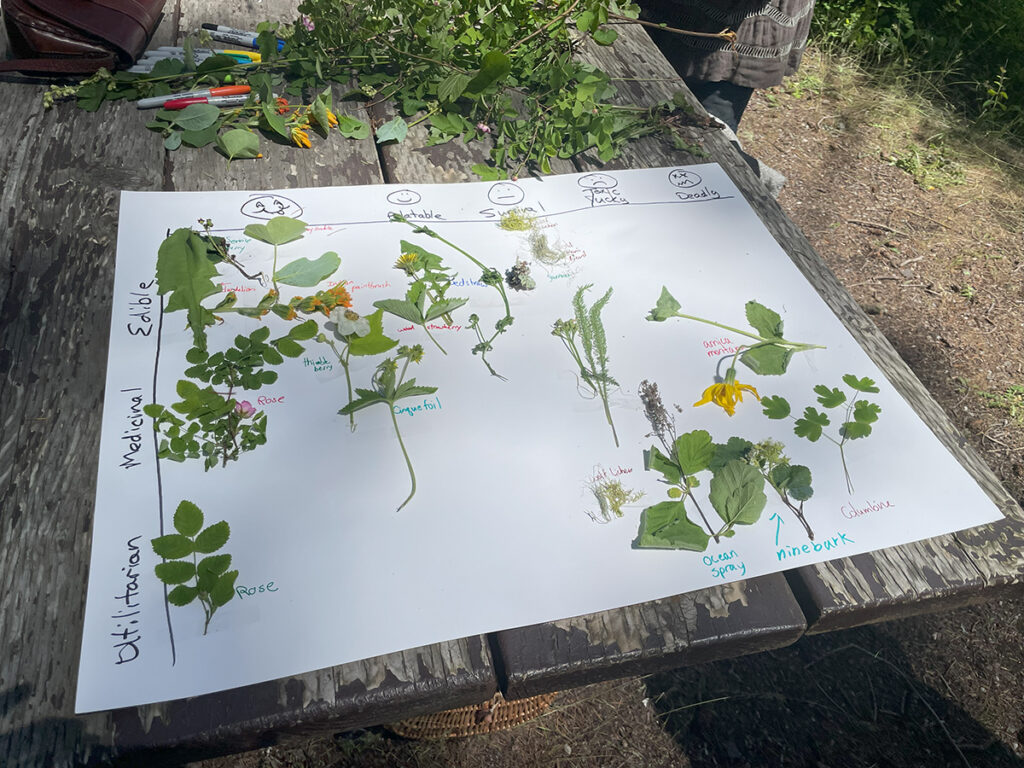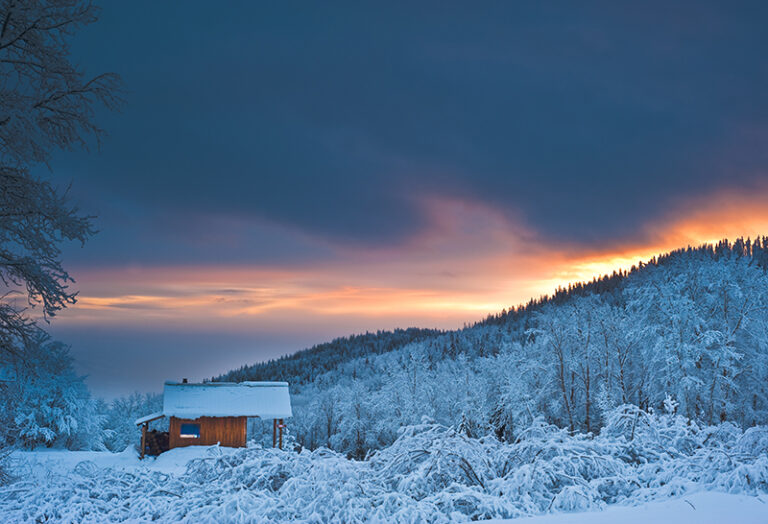Cover photo Karie Lee Knoke
I absolutely love this time of year as the fresh plants spring forth, marking the time to forage for food! I find that there is more food in the forest than what is ready in my garden. Not only that, the majority of weeds in my garden are delicious and edible. I think it’s insane to pull the weeds just to make room for more food to grow. Why not eat your weeds first, while waiting for your garden to grow?
We are so fortunate in the Inland Northwest to have few poisonous plant varieties. If you were to look out across the natural landscape, you would find that roughly 90 percent of what you see is not poisonous. Therefore, it is edible, right? Well, maybe. A plant may be edible, but perhaps not palatable. Some plants are fine in small amounts, but can give you a tummy ache or make you sick in larger quantities.
In my foraging classes, I like to rate plants on an edibility continuum from Yummy to Palatable, Survival, Toxic and Deadly. The Survival food category means it tastes horrible, but you probably won’t die.
The best way to learn wild foraging is to focus on the poisonous plants first. The poisonous plant list is much shorter and the most important to learn. Ingesting the wrong plant can cause immediate death, so take the time to learn these first! Once you know these, the forest becomes a haven for finding dinner ingredients.
Let’s start out with water hemlock (Cicuta maculata) and poisonous hemlock (Conium maculatum). These are the deadliest two plants in the Inland Northwest. One nibble of the plant and you may not live long enough to make it to the hospital. Be sure to wash your hands thoroughly after handling them to ensure you don’t accidentally put your fingers in your mouth. I would even go so far as to say not to pick any other edible plants that shares the same water. If you see water hemlock in a ditch, I would not pick the violet flower that’s growing next to it, just to be safe.

These two plants are in the carrot family (Apiaceae) and can be mistaken for wild carrots, otherwise known as queen anne’s lace. Make sure you know the difference! Wild carrot tends to grow abundantly along roadsides and the root is quite edible. The flowering umbel is useful as a medicine as an analgesic, anti-inflammatory, anti-viral, migraine remedy, expectorant, and antihistamine and makes an excellent flower essence that imparts profound wisdom, love and understanding. Consult your clinical herbalist before consuming as a medicine.
Of course, there is the infamous death camas. Death camas and its relative blue camas will often grow next to each other. The bulbs of the blue prairie camas were a vital food source for Indigenous peoples. They are easy to identify when blooming, but once the flowers die off, you are left with a dried-up stem and leaf pattern that looks very similar to death camas. I wouldn’t bet my life on deciding which one to dig up!
To help you start your journey down the path of wild foraging, here are some other poisonous plants that I suggest you learn first before you pick up your harvesting basket: red or white baneberry, arnica, tansy, lupines, milkweed, deadly nightshade flower and berries, foxglove, larkspur, monkshood, and pokeweed, just to name a few. But please note, even if the plant is poisonous, it may be useful as a medicine or have a utilitarian purpose. Dogbane and milkweed make excellent cordage and arnica makes a powerful topical remedy for sore muscles.
Stinging nettle is one of my all-time favorites, because the whole plant is useful. The leaves are edible and medicinal, and the seeds make a great shampoo for hair loss. The stocks make excellent cordage, and the roots can be used in a sitz bath for arthritis.
In my wild foraging classes, I rate whether a plant is edible, medicinal and/or utilitarian. I create a chart where the Y-axis represents these categories. If a plant is edible or medicinal, is it yummy, palatable, a survival food (yucky, but edible), toxic or deadly? Keeping in mind that different parts of the same plant may reside in several placements on the chart.
To learn more, please join me for a day of foraging at my Wild Edible & Medicinal Foraging class on May 18 or June 8.
Karie Lee Knoke is a wilderness/primitive skills instructor and founder of Sacred Cedars Wilderness School. She was a contestant on the reality survival TV show, Alone Season 9, on the History Channel/Netflix. Go to www.karieleeknoke.com for more information, or follow her on Facebook @SacredCedarsWildernessSchool or Instagram @karie_lee_knoke.













